Whatever disaster strikes, there's always an upside in religious rightland, always somebody to point the finger at with glee. Let's turn the tables. September 16, 2011

Editor's note: the following is satire... for the most part.
Why is it that whenever disaster strikes, right-wing religious nuts seem to have all the fun? Some might say it's just because they're sadists, but they always seem to find the silver lining. 9/11? God's calling on America to repent! (No, not for it's foreign policy, you dummy!) Hurricane Katrina? It was that darned homosexual parade the organizers forgot to tell anyone about!
Whatever disaster strikes, there's always an up-side in religious rightland, always somebody to point the finger at with glee. How come they get all the fun?
So when the East Coast got a one-two punch last month, earthquake-hurricane within a few days of one another, it got me thinking. When another hurricane followed up afterward, it was more than I could bear. And so, I offer you a list of God's Top 10 Targets from a not-so-right-but-possibly-
There are at least three different ways to approach this subject, and we have examples of all three. First is to identify specific target groups for repeated offenses—sinners who just won't mend their ways. Second is to identify geographic targets for specific offenses—sin city or state, as the case may be. Third is to identify specific individuals.
1. Republicans, for bearing false witness.
It's not just one of the Ten Commandments -- the Bible has repeated warnings against slander, false testimony and plain old lying. But Republicans apparently think that God was talking to somebody else—the exact opposite of their usual assumption—especially since Barack Obama arrived on the scene. Obama was born in Kenya, he is a Muslim, he's a socialist, a Marxist, a fascist, he hates white people (like his mom and his grandparents), he hangs out with terrorists. It goes on and on and on.
God has repeatedly told them not to act like this—yet they pay Him no mind. It's not just Obama, either. When it comes to science, things get just as bad, be it evolution, global warming, reproductive health, or gender orientation; when the science isn't on their side, the lying and slander take up the slack. It's not just that the science is against them, you see. Scientists are fraudsters; they are always conspiring against God and his people, according to some of the more whacked out types—like GOP senators, for example. God may have a great deal of patience, but when folks start trying to drag Him into the mix, that's when the earthquakes and hurricanes begin.
2. The Religious Right, for ignoring Jesus on the separation of church and state.
More than 1,600 years before John Locke and 1,700 years before Thomas Jefferson weighed in on the subject, Jesus said, “Render therefore unto Caesar that which is Caesar’s and unto God those things which are God’s.” (What's more, he said that, in part, as a way of opting out of a tax revolt!) But the Religious Right defiantly continues to oppose Him. God's been extremely patient with them over the years, but that patience has finally run out, as the most anti-separationist elements of the Religious Right—known as dominionists—have come increasingly to the fore. Some might say they're embarrassing Him personally. Others will say it's starting to get really dangerous. Whatever the reason, God's had enough.
3. The nativist right and the GOP, for a rash of anti-immigrant laws.
“Thou shalt neither vex a stranger, nor oppress him: for ye were strangers in the land of Egypt.” Exodus 22:21 could not be clearer—unless, of course, we switched from the King James Bible to the New International Version: “Do not mistreat an alien or oppress him, for you were aliens in Egypt.”
But for some in the GOP, them's fightin' words. All they can think about is disobeying God. They are positively possessed with the Satanic spirit of disobedience. It began with Arizona's SB-1070 last year. And while a number of states followed Arizona's lead with anti-immigrant laws of their own, the most notorious was Alabama, which faced "a historic outbreak of severe weather" in April.
The same day the law was signed, Alabama’s Episcopal, Methodist and Roman Catholic churches filed a separate lawsuit, claiming the law unconstitutionally interferes with their right of religious freedom. Church leaders said the law “will make it a crime to follow God’s command.” Among other things, the suit said, “The bishops have reason to fear that administering of religious sacraments, which are central to the Christian faith, to known undocumented persons may be criminalized under this law.” If criminalizing Christian sacraments isn't inviting divine retribution, what is?
4. The predatory lending industry and all who enable them.
There are numerous Bible passages condemning usury. Typical of these is Exodus 22:25: "If you lend money to one of my people among you who is needy, do not be like a moneylender; charge him no interest." Naturally, the whole of modern capitalism is built on ignoring a broad reading of this. But predatory lending is a particularly egregious form of defiance. It's proved rather costly to our country as well.
A Wall Street Journal article on December 31, 2007 reported that Ameriquest Mortgage and Countrywide Financial, two of the largest U.S. mortgage lenders, spent $20.5 million and $8.7 million respectively in political donations, campaign contributions, and lobbying activities between 2002 and 2006 in order to defeat anti-predatory lending legislation. Such practices contributed significantly to the financial crisis that plunged us into the Great Recession. But it seems that wasn't a clear enough lesson, especially since those who lobbied most intensely benefited most from the bailouts as well, according to an IMF study. So earthquakes and hurricanes are an old school, Old Testament way for God to make his point.
5. The GOP, for its contempt for the poor.
For more than half a century, the GOP has attacked Democrats and liberals for their concern for the poor. At least since the 1980s, the neo-liberal wing of the Democratic Party has tried to distance themselves from the poor, and reposition the party as defenders of the middle class, instead. The GOP has responded with policies to impoverish the middle class as well, so that they can be safely demonized, too.
But the GOP's venom for all but the wealthy has reached new heights during the Great Recession. Not only should those who caused the crisis be taken care of while all others suffer—far too many national Democratic politicians seem to agree on that one—but a renewed rhetoric of contempt for the poor has emerged, in direct contradiction to what Jesus said, in Luke 6:20: “Blessed are you who are poor, for yours is the kingdom of God."
Increasingly, it seems, Republicans don't think poor people are even human. In January 2010, South Carolina Lt. Governor Andre Baurer (R) compared poor people to stray animals: He told an audience that his grandmother told him "as a small child to quit feeding stray animals. You know why? Because they breed." He compared this to government assistance, which he said is "facilitating the problem if you give an animal or a person ample food supply. They will reproduce, especially ones that don't think too much further than that.
And so what you've got to do is you've got to curtail that type of behavior. They don't know any better." Then, in early August, Nebraska Attorney General Jon Bruning, the frontrunner for the GOP senate nomination, compared poor people to scavenging racoons. Talk like that is what causes earthquakes and hurricanes.
6. Privatized public utilities, for the worship of Mammon.
Public utilities are natural monopolies, totally unsuited to private enterprise, since there is no competitive marketplace. This, of course, makes them perfect targets for monopoly capitalists—Mammon's greatest worshipers.
Against them, God struck a mighty blow. In Mansfield, Massachusetts, which has had its own municipal power service since 1903, electrical service was restored for most customers within 24 hours after Irene hit, even though 4,000 out of 9,500 households had lost power—quite unlike what happened to nearby communities served by a commercial outfit. According to a local report, the storm “uprooted old trees and knocked down utility lines all over town.”
“Unlike homes and businesses in Easton, Norton and Foxboro, however, local customers did not have to wait for National Grid to respond with crews or listen to a recording on the telephone.... [M]uch of Easton waited three days for power to return and areas of communities such as Foxboro are still in the dark.” According to another report, about Foxborough, “The outrage expressed... is similar to the movie Network in the scene where people flung open their windows and said, 'I'm as mad as hell, and I'm not going to take this anymore.'”
Then there are a couple of geographically specific targets:
7. Virginia.
Virginia was the site of the earthquake's epicenter and the second state where Irene made landfall, so the state is a target-rich environment.
There's House Majority Leader Eric Cantor. On God's bulls-eye scale, the epicenter near Mineral, Virginia is in Cantor's district—a direct hit. And in budget negotiations this year, Cantor's contempt for the poor came through loud and clear. He's been the most aggressive congressional leader when it comes to budget-cutting and pushing the economy as hard as possible over the cliff. Then, after the earthquake hit, Cantor said any federal relief would have to be offset with spending cuts, and quipped, “Obviously, the problem is that people in Virginia don’t have earthquake insurance.” He reiterated his demand for offsetting cuts when Hurricane Irene hit shortly afterward—even though he voted against such a provision after Tropical Storm Gaston hit the Richmond area in 2004.
Then there's Virginia Attorney General Ken Cuccinelli. No way he escapes God's wrath. Cuccinelli's widely criticized witch-hunt against eminent climate scientist Michael Mann represents the most extreme right-wing attack on the mythical “climate-gate” scandal, which consisted primarily of scientists making snide remarks about ignoramuses like Cuccinelli. He's all wrapped up in sin of bearing false witness. Which is where Hurricane Irene comes in—although it surely doesn't help that Cuccinelli is suing to keep people sick, and has told Virginia's colleges and universities that they can't ban anti-gay discrimination.
And, of course, Virginia Governor Bob McDonnell has tried to have it both ways with God, as well as with the people of Virginia. On the one hand, all the way back in 1989, he wrote a Christian Reconstructionist M.A. thesis, “The Republican Party’s Vision for the Family: The Compelling Issue of the Decade” at the College of Law at Pat Robertson’s Regent University. McDonnell's authorship of the thesis came to light during his 2009 campaign for governor, but because the establishment is in deep denial about Dominionism in general, and Christian Reconstructionism in particular, the full weight of his thesis never really sunk in. On the other hand, McDonnell has tried very assiduously to walk away from that past, given that almost no one wants to admit to such extreme views. He's wobbled back and forth on a number of issues, but generally tried to strike a reasonable demeanor—in sharp contrast to Cuccinelli. But God doesn't like folks who run hot and cold, which is why McDonnell's a target, too.
Finally, just to be a wee bit bipartisan about it, we need to include Virginia's Democratic Senator Mark Warner in our list—though with a bit of twist. On the day of the earthquake, Warner was scheduled to speak at the Library of Congress Packard Campus for Audio Visual Conservation in Culpepper, Virginia. He arrived about 10 minutes after the quake, according to the local Star Exponent, which reported:
The building had been emptied of its staff and the approximate 75 people who came to hear Warner so the former governor talked from under a tree atop Mount Pony.
“I was not going to mention the fact that one of the last times I was in Culpeper there was a tornado,” he said of an appearance years ago at CulpeperFest marked by wild weather. “If you don’t want me to come back, there’s an easier way to do this. If we start seeing frogs, it may be a sign of things to come,” he said.
So it's not that God is angry with Warner, exactly. He just targets Warner for amusement, to see what he'll say next. And, of course, because he, too, represents Virginia, truly a state of sin.
8. North Carolina.
Hurricane Irene could have barreled directly into South Carolina, but it delivered a stiff upper-cut to North Carolina instead. And why not? Governor Bev Perdue tried her darnedest to protect the state. She vetoed its draconian budget bill, only to see her veto over-ridden. It too was an attack on the poor -- the bill didn't just fail to balance spending cuts with tax increases, it actually let a temporary one-cent sales tax expire, along with some income taxes on high earners, while cutting $124 million in local education funding on top of $305 million cut in previous years. Perdue also vetoed a highly restrictive abortion law—one that, among other things, has a 24-hour waiting period, and force-feeds anti-abortion propaganda to women seeking an abortion—call it the “Bearing False Witness By Doctors Act.” But that veto was over-ridden as well—by a single vote in the state senate. So, really, God's hand was forced on this one. He had no choice but to strike North Carolina, and strike it hard.
Finally, there are two individual targets to consider:
9. Rick Perry.
While the one-two punch of the Virginia earthquake and Hurricane Irene were far removed from Texas Governor Rick Perry's stomping grounds, God had not forgotten Perry, but was merely preparing to toy with him. Perry, after all, had responded to a terrible drought in Texas not by implementing any long-term policy measures (which might make Texas better able to deal with the prospects of more severe droughts to come as global warming impacts increase), but by calling on Texans to pray.
Back in April, Perry proclaimed the "three-day period from Friday, April 22, 2011, to Sunday, April 24, 2011, as Days of Prayer for Rain in the State of Texas.” Since then, however, things have only gotten worse, as Timothy Egan noted in the NY Times “Opinionator” blog, "[A] rainless spring was followed by a rainless summer. July was the hottest month in recorded Texas history....Nearly all of Texas is now in 'extreme or exceptional' drought, as classified by federal meteorologists, the worst in Texas history. Lakes have disappeared. Creeks are phantoms, the caked bottoms littered with rotting, dead fish.”
Somehow, though, it seemed like most folks outside of Texas had no idea of Perry's failed prayer initiative. That's where God came in, following up Irene with the tantalizing prospect of a Gulf of Mexico storm that would finally bring relief to the Longhorn state. But alas no. First Tropical Storm Jose petered out entirely, then Tropical Storm Lee turned to Louisiana instead. If you pray with Perry, you obviously take the Lord's name in vain. As one frustrated Texan wrote on Reddit, “Perry's prayer has been answered. The answer was 'No'.” God is making things perfectly clear, as Richard Nixon would say: If you want someone praying for America in the White House, Rick Perry is not your guy.
10 God.
Yes, it's true, God Himself was one of the main targets of God's wrath, particularly during the earthquake, which did remarkably little damage to the living. But, as Rob Kerby noted at BeliefNet, churches took some pretty hard hits:
“Churches seemed to bear the brunt of Tuesday’s 5.8 earthquake on the East Coast.
“Significant damage was reported to Washington, D.C.’s National Cathedral and St. Peter’s Catholic Church, historic St. Patrick’s Church near Baltimore, and two churches in Culpepper, Va., close to the epicenter — St. Stephen Episcopal Church and Culpepper Christian Assembly.”
Okay, so maybe God's not self-flagellating. Maybe it's the tenants who are being targeted. But who's to say, really? And if the God's wrath biz is all about appropriating authority to cast blame around, then why not think really big, and proclaim God Himself to be the target? Pat Robertson & company have monopolized this gig for far too long. If the rest of us are to have any hope of catching up, we're got to make ourselves a splash. And what better way to make a splash than proclaiming that God is the target?










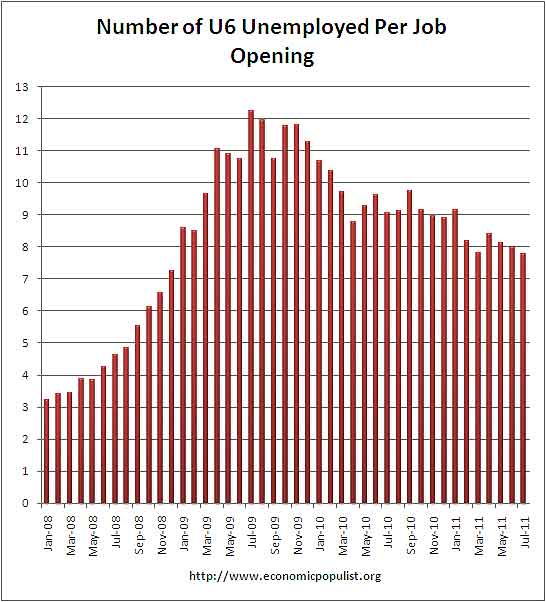
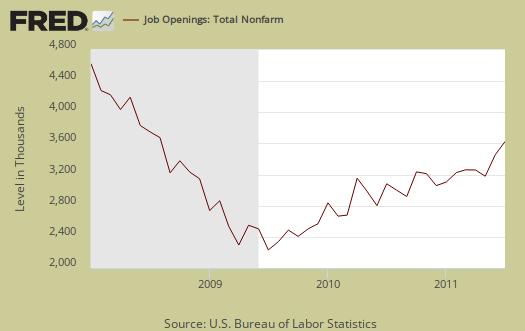

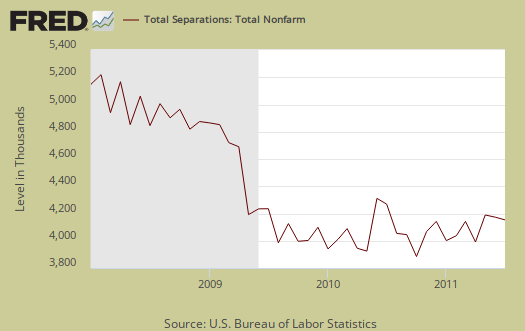
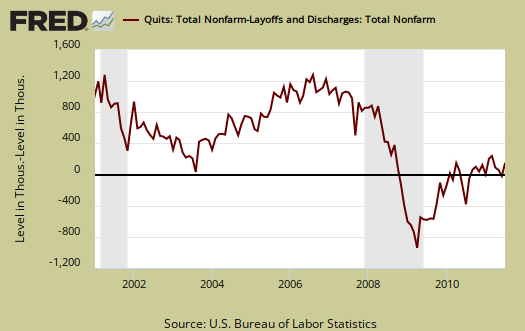
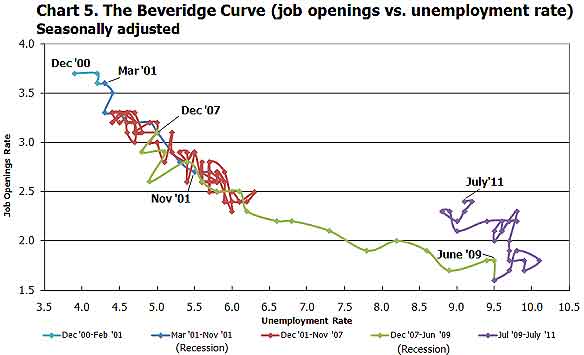
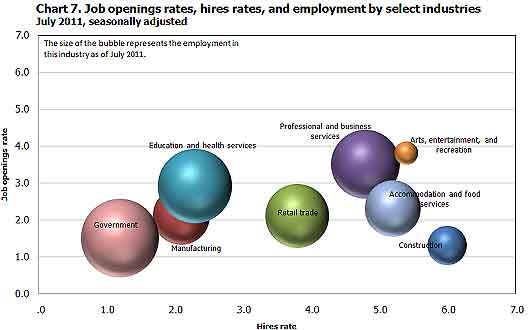
 is defined as the official unemployed plus people who are in part-time
jobs for economic reasons plus the marginally attached. The marginally
attached,
is defined as the official unemployed plus people who are in part-time
jobs for economic reasons plus the marginally attached. The marginally
attached, , are officially not part of the civilian labor force,
, are officially not part of the civilian labor force,  ,
and also not seasonally adjusted. The above graph was created by the
seasonally adjusted levels of the unemployed, part-time for economic
reasons and the marginally attached. The raw U-6 totals can also be
calculated by this formula:
,
and also not seasonally adjusted. The above graph was created by the
seasonally adjusted levels of the unemployed, part-time for economic
reasons and the marginally attached. The raw U-6 totals can also be
calculated by this formula:




